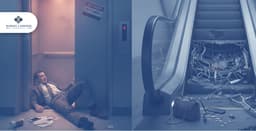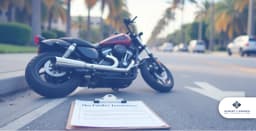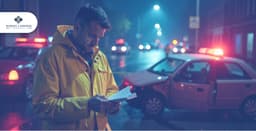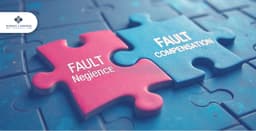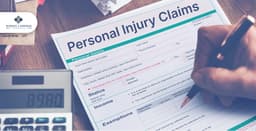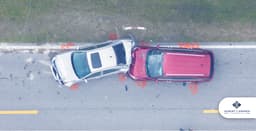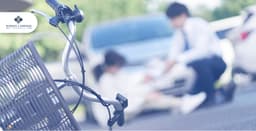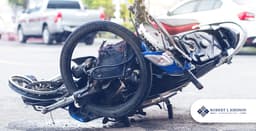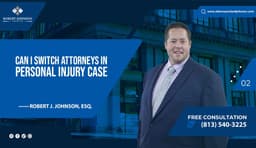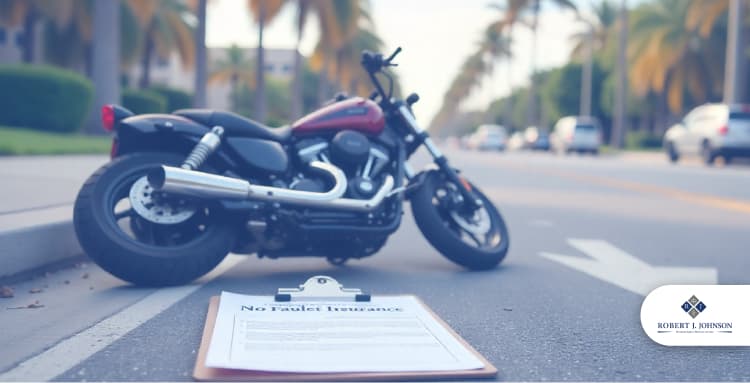
October 30, 2025
Is Florida a No-Fault State for Motorcycle Accidents Too?
The term “no-fault” is everywhere in Florida’s insurance world, a label that promises quick payouts and fewer battles over blame after a crash. For drivers behind the wheel of a car, the system is familiar and straightforward. Their medical bills are handled by their own insurance regardless of who caused the accident. Many motorcyclists hear the same phrase and assume the same safety net is waiting for them.
The reality tells a different story. Motorcycles do not get the no-fault shield, leaving riders exposed to a system that works by an entirely different set of rules. Then confusion turns costly, because what you think protects you on the road might not exist at all.
So how does Florida really treat motorcycle accidents, and what does that mean for anyone who rides? The answer is not what most expect…
1) Florida’s No-Fault Rule, Explained Simply
When Floridians talk about “no-fault” insurance, they’re usually referring to a system designed to get money into injured drivers’ hands fast, without the headaches of proving who caused the wreck. It’s a safety rule created primarily for motorists in four-wheeled vehicles like cars, trucks, and SUVs, not two-wheelers.
Here’s what riders need to know about the no-fault system that applies to cars, however, not to you when you’re on a bike:
What “no-fault” means for car drivers
Under Florida law, every driver must carry Personal Injury Protection (PIP) coverage, which acts as a first line of financial support after a crash. It ensures that the driver’s own insurer kicks in, regardless of fault, hence the term “no-fault.”
How PIP handles medical costs
According to the Florida Department of Highway Safety and Motor Vehicles (FLHSMV), Personal Injury Protection (PIP) in Florida covers 80% of necessary medical expenses up to $10,000 and applies regardless of who caused a crash.
Moreover, 60 percent of lost wages under Florida law. The aim is simply to get treatment funds flowing quickly so victims aren’t stuck waiting or suing for basics like ER visits or physical therapy.
Why Florida adopted this system
The no-fault approach was launched to reduce litigation, lower court burdens, and speed up compensation for injuries. It’s designed around the idea that neither side waits to assign blame. Everyone just taps into their own coverage and keeps moving forward.
However, this system applies only to four-wheeled vehicles, as confirmed by the Florida Department of Highway Safety and Motor Vehicles. As motorcycles are two-wheelers, they fall outside that requirement entirely.
2) Where Motorcycles Break Away from the Rule
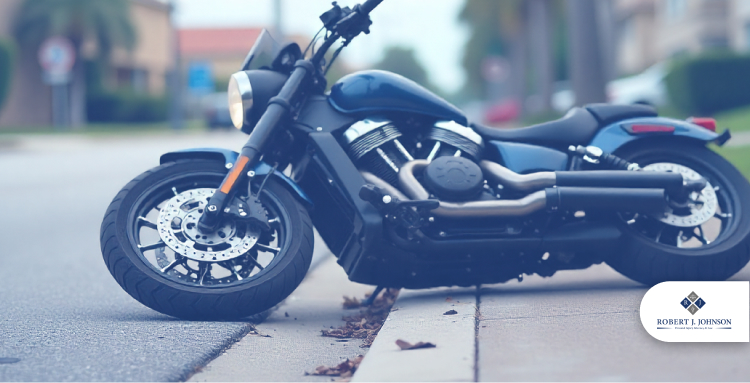
For all the talk about Florida’s no-fault promise, motorcycles are the one glaring exception.
(I) Why does PIP not apply to motorcycles in Florida?
The law was never built with riders in mind, which is why Personal Injury Protection (PIP) coverage does not extend to two-wheeled vehicles. The Florida Department of Highway Safety and Motor Vehicles makes it clear that PIP is required only for vehicles with at least four wheels.
(II) How riders are left out of the no-fault system.
That means when a rider is injured, the quick-pay safety net that cushions car drivers simply does not exist. Instead, bikers face a very different reality, where coverage depends on what they’ve arranged in advance or what they can prove after a crash.
(III) The myth vs. the truth about motorcycle insurance in the state.
The misconception is widespread. Many assume their motorcycle insurance automatically mirrors the protections car owners receive, when in truth, it rarely does. Standard motorcycle policies typically focus on property damage or liability, not guaranteed medical payouts. The gap between perception and reality often shows itself in the worst possible moment, after an accident when the bills start arriving.
So if PIP is off the table, what actually helps Florida motorcyclists cover the costs of medical treatment and lost wages? That answer lies in the types of coverage riders can choose for themselves and the risks of riding without them.
3) What Riders Must Rely On Instead
Without the safety net of Personal Injury Protection (PIP), Florida motorcyclists must take proactive steps to safeguard their health and finances. Fortunately, several coverage options are available to bridge the gap left by the absence of PIP.
Health Insurance: Riders can utilize their existing health insurance policies to cover medical expenses resulting from motorcycle accidents. However, it's essential to verify that the policy provides adequate coverage for such incidents.
Medical Payments (MedPay): MedPay is an optional coverage that can be added to a motorcycle insurance policy. It helps pay for medical expenses incurred due to an accident, regardless of fault.
Bodily Injury Liability (BIL): While not mandatory for motorcycle owners, BIL coverage can be beneficial. It covers medical expenses for others if the rider is at fault in an accident. However, it does not cover the rider's own medical expenses.
Uninsured/Underinsured Motorist (UM/UIM) Coverage: UM/UIM coverage protects riders if involved in an accident with a driver who lacks sufficient insurance. It can help cover medical expenses and lost wages that the at-fault driver's insurance would have covered.
Avoiding the Digital Trap: When fault is on the line in a motorcycle accident, technology often holds the key. Dashcams, onboard data recorders, GPS logs, and even digital forensics can paint a clear picture of what really happened on the road. These tools help cut through the chaos, offering digital evidence that shows whether a driver failed to act with reasonable care.
Riding without sufficient insurance can lead to significant out-of-pocket expenses, especially if the rider is at fault in an accident. It's crucial to assess personal financial situations and consider hiring a personal injury lawyer for legal and financial benefit.
4) How Fault Works in Motorcycle Accidents
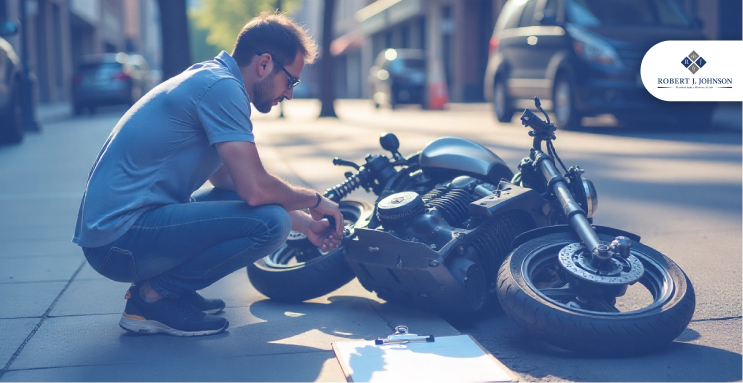
In Florida, the absence of Personal Injury Protection (PIP) for motorcyclists means that fault becomes a pivotal factor in determining compensation. Unlike the no-fault system that expedites claims for car drivers, motorcyclists must proceed in a fault-based system, where proving negligence is essential.
Here's how it works:
Establishing Fault: After a motorcycle accident, the rider must demonstrate that another party's negligence caused the incident. This could involve gathering evidence such as police reports, witness statements, and accident reconstruction analyses.
Filing a Claim: Once fault is established, the rider can file a claim with the at-fault party's insurance company. However, this process can be time-consuming and may not always result in full compensation.
Legal Action: If the insurance claim doesn't cover all expenses, the rider may need to pursue a personal injury lawsuit. An attorney can help prove the other party's liability in court, which can be complex and requires legal expertise.
No Serious Injury Threshold: Unlike car accidents, where Florida's no-fault law requires a serious injury to pursue pain and suffering damages, motorcyclists can seek such damages without meeting this threshold. However, they must still prove the extent of their injuries and the impact on their quality of life.
Knowing the fault-based system is essential for motorcyclists to navigate the aftermath of an accident effectively. However, this system's complexities highlight the importance of adequate insurance coverage and legal counsel to ensure fair compensation.
5) The Hidden Risks of Riding Without Coverage
Riding in Florida brings a sense of freedom, yet it also carries a price that can quickly spiral without proper coverage. Motorcycle crashes are far more likely to result in severe injuries compared to car accidents, and that means higher hospital bills, longer recovery times, and an uncertain financial path forward.
What catches many riders off guard is the assumption that their protection mirrors that of car drivers. In reality, without Personal Injury Protection to lean on, a single trip to the emergency room can wipe out savings, and weeks of missed work only deepen the problem.
The most sobering part comes in the real-world scenarios. A rider hit by a distracted driver may face months of rehab without any guaranteed insurance payouts. Another who believed liability coverage would handle their own expenses might discover it only protects others, not themselves. These are not abstract warnings; they are the hard truths that play out in Florida every day.
6) Smart Moves for Florida Motorcyclists
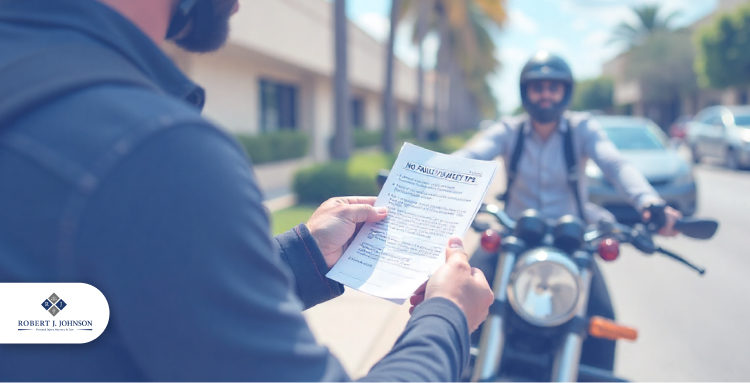
Motorcyclists who plan ahead can shield themselves from the financial fallout of an accident. The smartest riders treat insurance not as a burden but as part of their overall strategy for staying safe on the road.
Here are moves that make a difference:
Invest in Uninsured/Underinsured Motorist Coverage
Too many Florida drivers carry only the bare minimum, leaving little to cover someone else’s injuries. This coverage steps in when the other driver’s policy falls short, protecting you from being left with the bill.Add Medical Payments (MedPay)
Even a small MedPay policy can cover immediate medical expenses after a crash, offering breathing room before larger claims are resolved.Consider Bodily Injury Liability
While not required for motorcycles, carrying it shows responsibility and ensures that if you’re at fault, others are not left uncompensated. This also helps safeguard you from lawsuits.Look Beyond Insurance
Coverage is only part of responsible riding. Wearing proper safety gear, taking advanced riding courses, and preparing financially for unexpected setbacks all strengthen your safety net.Know When to Call an Attorney
Insurance companies often look for ways to minimize payouts. Having an experienced motorcycle accident attorney on your side can mean the difference between a partial recovery and full compensation.
Clarity From Robert J. Jhonson in the Chaos
Florida’s no-fault law leaves motorcyclists outside its protections, and that gap can feel overwhelming after a crash. You should not have to navigate insurance disputes or mounting bills on your own. Our team steps in to protect your rights, secure evidence, and pursue the coverage you need.
While you focus on recovery, we focus on resolving the complexities that follow an accident. Reach out and get a free evaluation of your case. With the right guidance, uncertainty gives way to confidence, and every mile ahead feels more secure.




